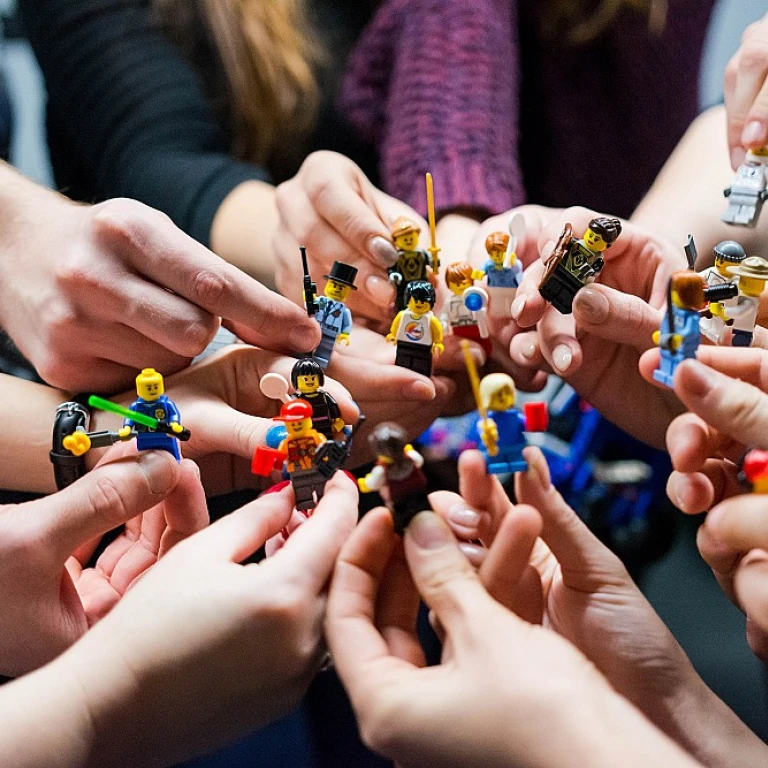
Understanding the Importance of Morning Meetings
Why Morning Meetings Matter
Morning meetings can serve as a vital starting point for school days, setting a positive tone for students, teachers, and classrooms alike. They are not just for elementary schools but can be adapted as effective engaging meeting topics for better work-life balance in various settings. The purpose of these meetings is to align focus and energy, enhancing both learning and social emotional development among kids and adults.
Integrating engaging activities and ideas in morning meetings aids in starting the day with enthusiasm and a structured mindset. These meetings offer students an opportunity for creativity, collaboration, and a sense of community, providing an excellent platform for fun and meaningful interaction. For teachers and facilitators, it's a golden opportunity to build an inclusive environment that fosters both emotional and intellectual growth.
A morning meeting begins the day with shared purpose through activities that pave the way for positive learning outcomes. When done right, they not only increase student engagement but also improve the way the group connects throughout the week, ensuring everyone is on the same page. When students, whether young ones in an elementary school classroom or older learners, start by engaging in thoughtful morning sessions, it can significantly influence their emotional learning capacities and create a foundation for success throughout the school week.
Creative Icebreakers to Start the Day
Creatively Breaking the Ice
Starting the day with engaging activities during morning meetings can set a positive tone, making your students more open and receptive. Incorporating creative icebreakers as a part of morning meeting activities can foster a sense of community within the classroom setting, preparing young minds for a productive learning day. Here are several ideas to consider:- Two Truths and a Lie: An age-old classic that never gets old. Each student takes turns telling two true facts and one falsehood about themselves. The rest of the group tries to guess which statement is the lie. This not only encourages students to share personal experiences but also to practice skepticism and deduction in a fun way.
- Pictionary with a Twist: Incorporating a drawing game can cater to kids who enjoy visual activities. Give each student emotions or abstract concepts like happiness or kindness to illustrate. This promotes social emotional learning and gets students comfortable with expressing complex ideas.
- Random Fact Sharing: Dedicate a small windows of time each week for students to share an interesting fact they learned. It could be from a book, a documentary, or even a fun conversation the day before. This activity promotes a love for learning and can introduce classmates to new topics.
Incorporating Mindfulness Practices
Bringing Mindfulness into the Mix
Incorporating mindfulness practices into morning meetings can set a positive tone for the day, benefiting both students and teachers. Mindfulness can enhance emotional learning, allowing participants to approach tasks with a clarity and calmness that is particularly valuable in a school setting.- Start with a few moments of silence where everyone in the classroom can ground themselves. This short activity can reduce anxiety and help with focus throughout the day.
- Engage kids with guided meditations or simple breathing exercises. These activities are great for elementary school students to help them find balance.
- Teachers can introduce short gratitude sessions. Asking students to share something they are thankful for can foster a positive environment and improve social interaction.
Team Building Exercises for Better Collaboration
Enhancing Team Dynamics with Collaborative Exercises
Morning meetings provide an excellent opportunity to reinforce team collaboration while setting a positive tone for the day. By incorporating engaging activities, participants – whether students, teachers, or professionals – can build stronger connections, promoting a harmonious and productive environment.
One effective technique is to implement group activities that cater to various interests and skill sets. These exercises not only spark creativity but also enrich emotional learning, essential in nurturing a supportive team atmosphere. For instance, integrating a simple game students can enjoy aids in developing both social and communication skills.
Consider adopting a "Story Sharing" session. Participants, whether kids in an elementary school or professionals in a corporate setting, each share a quick story related to a topic of the day. This helps in breaking the ice, making the morning meeting fun and lively, and encourages everyone to start the day on a positive note.
For classrooms, incorporating activities like book reading allows kids to explore their creativity while promoting literacy. Teachers can organize a weekly session where students pick a fun book to discuss, building both comprehension and public speaking abilities over the weeks school remains in session.
Meeting slides and morning message boards play a crucial role in setting the context for these activities. Teachers and leaders should ensure content is engaging, clear, and fosters collaboration. Regularly rotating activities and ideas keeps enthusiasm high and ensures meetings remain a highlight rather than a mundane routine.
Utilizing collaborative exercises as part of the morning routine not only enhances collaboration but also fosters a sense of community, ensuring that everyone feels valued and included. This plays a significant role in creating a balanced work and personal life, where team spirit and individual well-being are both prioritized.
Balancing Work and Personal Life Through Meetings
Integrating Work-Life Balance in Morning Meetings
Balancing work and personal life is a crucial aspect of maintaining overall well-being, and morning meetings can play a significant role in achieving this balance. By incorporating thoughtful activities and discussions, these meetings can set a positive tone for the day, helping employees manage their time effectively and reduce stress.
Here are some ideas to help integrate work-life balance into your morning meetings:
- Flexible Start Times: Allowing a flexible start time for morning meetings can accommodate different personal schedules, especially for those with family commitments or students who need to attend school drop-offs.
- Mindfulness Moments: Incorporating short mindfulness practices, as discussed earlier, can help employees center themselves and transition smoothly from personal to professional life.
- Personal Sharing: Encourage team members to share personal achievements or challenges. This can foster a supportive environment and help colleagues understand each other's work-life dynamics.
- Goal Setting: Use the meeting to set realistic goals for the day or week. This can help employees prioritize tasks and manage their time more effectively, reducing the overlap between work and personal life.
- Social Emotional Learning: Activities that promote social emotional learning can enhance empathy and communication skills, contributing to a more harmonious work environment.
By thoughtfully integrating these elements, morning meetings can become a platform for promoting a healthy work-life balance, ultimately leading to more engaged and productive teams.
Evaluating the Effectiveness of Morning Activities
Assessing the Value of Morning Meetings
Evaluating the success of your morning meetings is crucial to understanding their true impact on both productivity and work-life balance. As teachers and leaders aim to manage time effectively while fostering a positive classroom or workplace environment, this evaluation process becomes an essential part of their routine. To start, reflect on how these gatherings contribute to the students' or team members' day. Ask yourself the following questions:- Are the activities engaging enough to capture students' or participants' attention and set a positive tone for the rest of the morning?
- Do members leave the meeting with excitement and motivation about the activities and ideas shared?
- Is there a noticeable improvement in the group's emotional learning and collaboration skills as a result of the team-building exercises?












